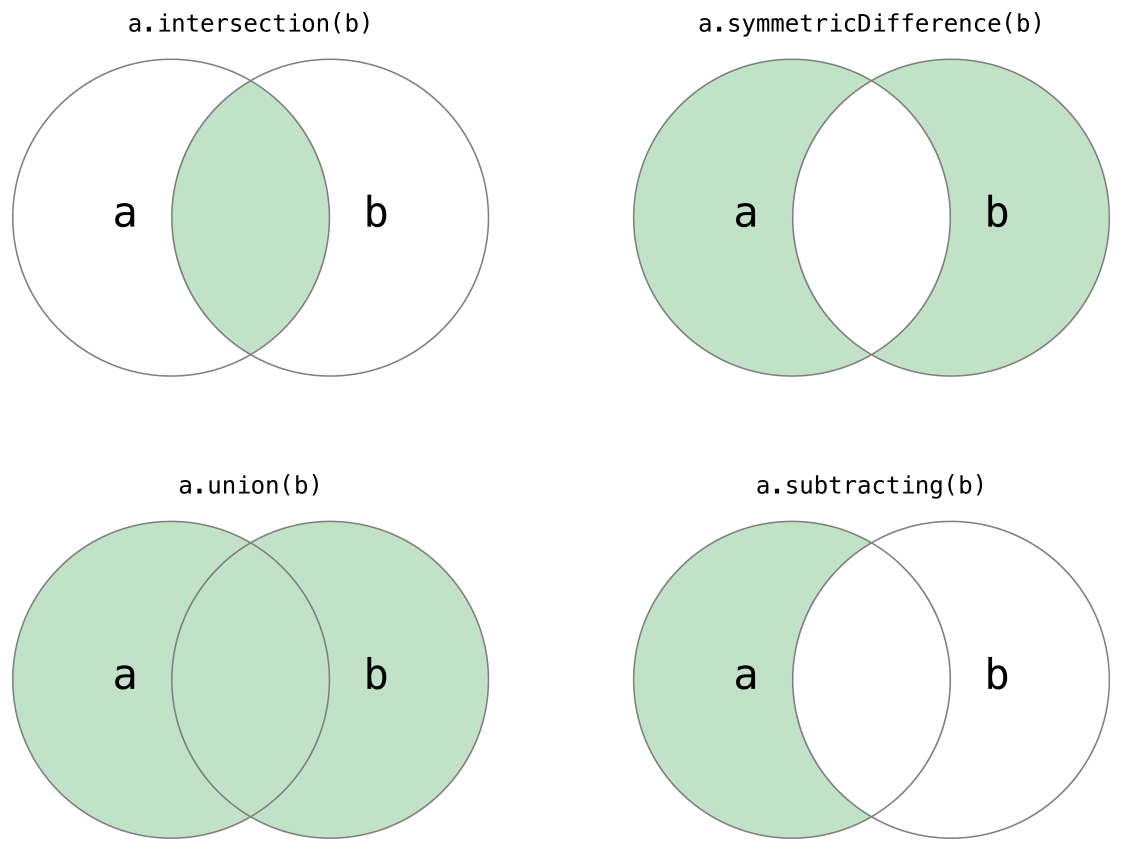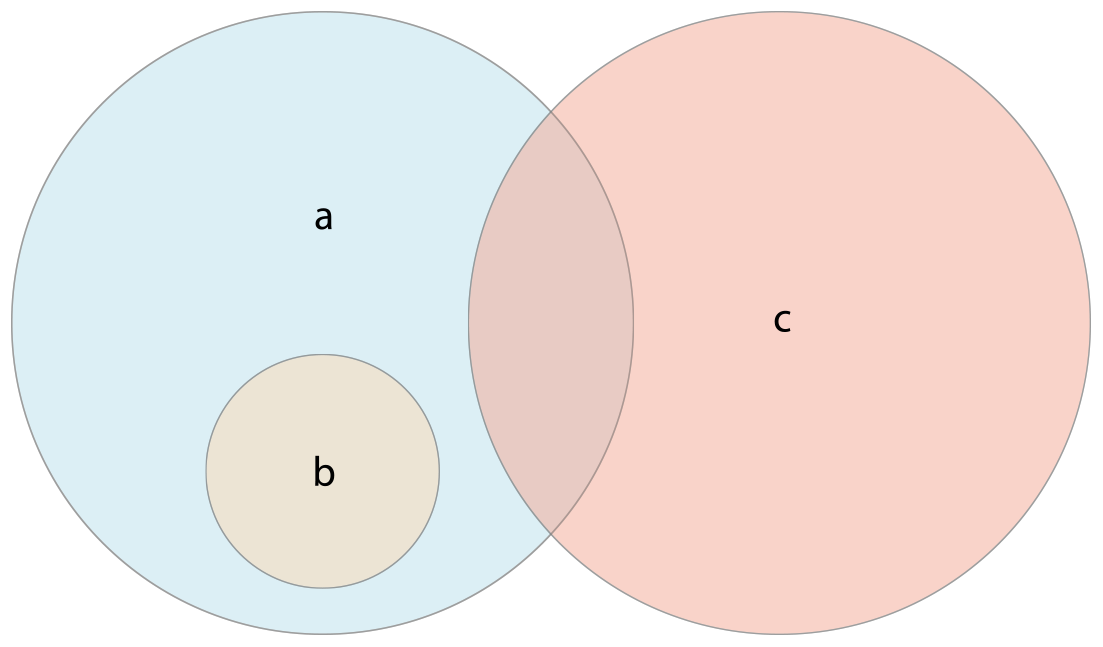Arrays
Creating an Empty Array
var someInts: [Int] = []Creating an Array with a Default Value
var threeDoubles = Array(repeating: 0.0, count: 3)
// threeDoubles is of type [Double], and equals [0.0, 0.0, 0.0]Accessing and Modifying an Array
- isEmpty
- insert(_:at:)
- remove(at:)
- removeLast()
Sets
Creating and Initializing an Empty Set
var letters = Set<Character>()
print("letters is of type Set<Character> with \(letters.count) items.")
// Prints "letters is of type Set<Character> with 0 items."Alternatively, if the context already provides type information, such as a function argument or an already typed variable or constant, you can create an empty set with an empty array literal:
letters.insert("a")
// letters now contains 1 value of type Character
letters = []
// letters is now an empty set, but is still of type Set<Character>Accessing and Modifying a Set
- isEmpty
- insert(_:)
- remove(_:)
- removeAll()
Performing Set Operations
Fundamental Set Operations

let oddDigits: Set = [1, 3, 5, 7, 9]
let evenDigits: Set = [0, 2, 4, 6, 8]
let singleDigitPrimeNumbers: Set = [2, 3, 5, 7]
oddDigits.union(evenDigits).sorted()
// [0, 1, 2, 3, 4, 5, 6, 7, 8, 9]
oddDigits.intersection(evenDigits).sorted()
// []
oddDigits.subtracting(singleDigitPrimeNumbers).sorted()
// [1, 9]
oddDigits.symmetricDifference(singleDigitPrimeNumbers).sorted()
// [1, 2, 9]Set Membership and Equality
Subset, Superset, Disjoint 중 어떤 관계인지 알 수 있다.
a - b: Superset
a - c: Subset
b - c: Disjoint

let houseAnimals: Set = ["🐶", "🐱"]
let farmAnimals: Set = ["🐮", "🐔", "🐑", "🐶", "🐱"]
let cityAnimals: Set = ["🐦", "🐭"]
houseAnimals.isSubset(of: farmAnimals)
// true
farmAnimals.isSuperset(of: houseAnimals)
// true
farmAnimals.isDisjoint(with: cityAnimals)
// trueDictionaries
Creating an Empty Dictionary
var namesOfIntegers = [Int: String]() // namesOfIntegers is an empty [Int: String] dictionaryDictionary 또한 한번 선언되어있으면 빈 딕셔너리가 되어도 Key와 Value의 타입이 변하지 않는다. 빈 Dictionary는 [:]로 표현할 수 있다.
namesOfIntegers = [:]
// namesOfIntegers is once again an empty dictionary of type [Int: String]Accessing and Modifying a Dictionary
- isEmpty
- updateValue(_:forKey:)
- removeValue(forKey:)
Dictionary에서 특정한 Key 값에 접근할 때 Key 값이 존재하지 않을 수 있기 때문에 늘 옵셔널 값으로 결과를 준다. 즉 존재하지 않는 Key 값에 접근하면 nil을 반환시켜주는 것이다. 이렇기 때문에 옵셔널 바인딩을 활용해서 Value 값을 추출해 줘야 한다.
if let removedValue = airports.removeValue(forKey: "DUB") {
print("The removed airport's name is \(removedValue).")
} else {
print("The airports dictionary doesn't contain a value for DUB.")
}
// Prints "The removed airport's name is Dublin Airport."Iterating Over a Dictionary
튜플 형태로 리턴된다!
for (airportCode, airportName) in airports {
print("\(airportCode): \(airportName)")
}
// LHR: London Heathrow
// YYZ: Toronto PearsonDictionary의 keys, values 프로퍼티로 각각 접근할 수도 있다.
for airportCode in airports.keys {
print("Airport code: \(airportCode)")
}
// Airport code: LHR
// Airport code: YYZ
for airportName in airports.values {
print("Airport name: \(airportName)")
}
// Airport name: London Heathrow
// Airport name: Toronto PearsonInitialize a new array with the keys or values property
let airportCodes = [String](airports.keys)
// airportCodes is ["LHR", "YYZ"]
let airportNames = [String](airports.values)
// airportNames is ["London Heathrow", "Toronto Pearson"]